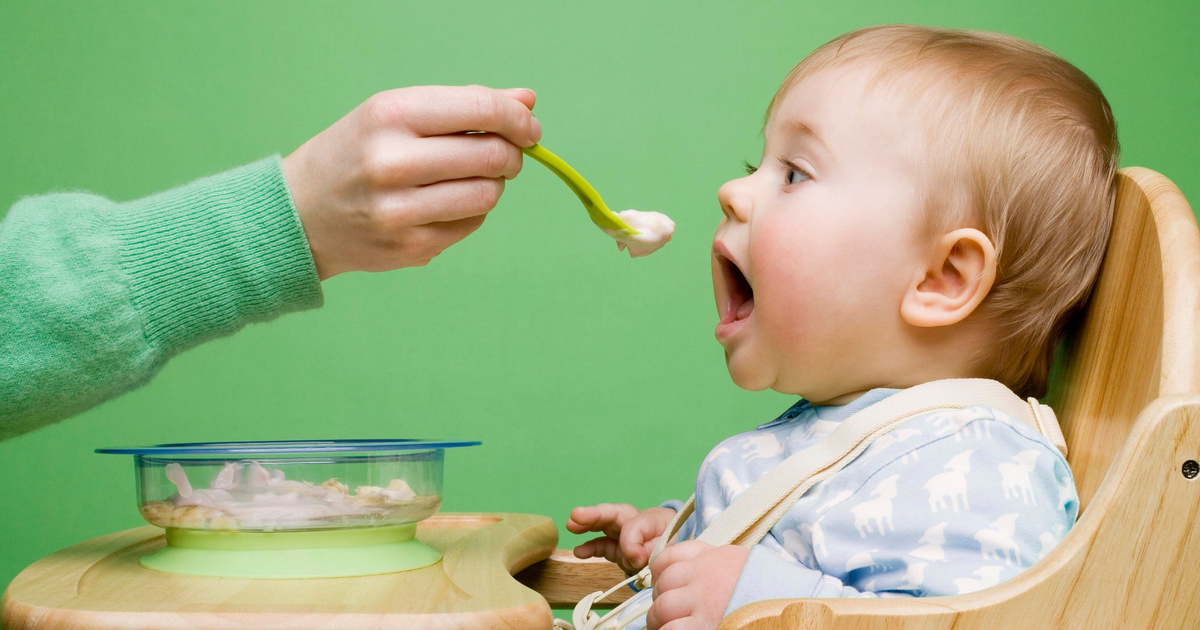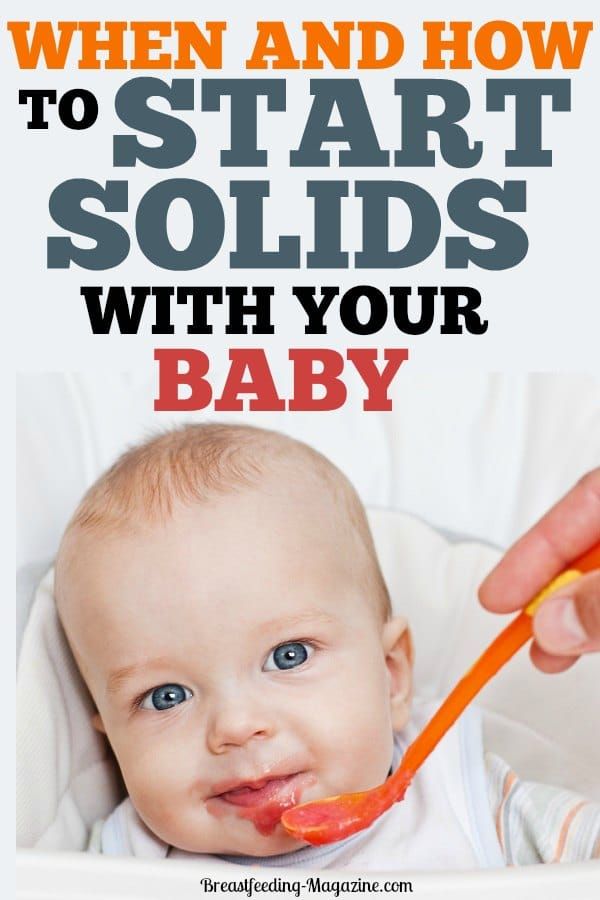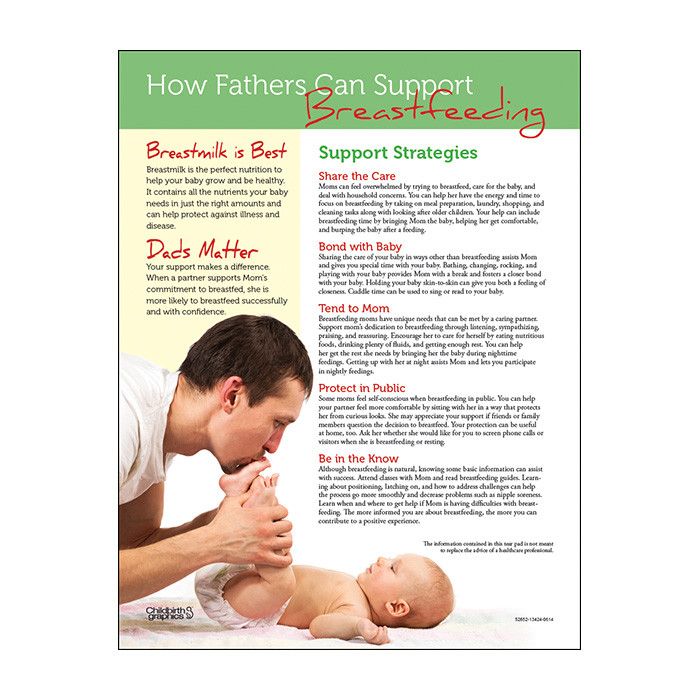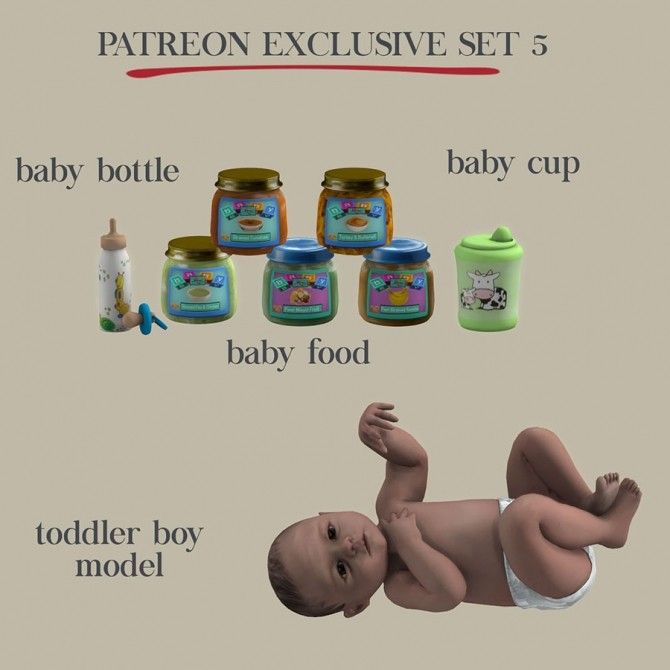Babies gagging on solid food
Why babies gag themselves, and what to do if your baby's gagging on food
It's normal for babies to gag. They may gag when they're first getting used to eating, taste something they don't like, or have too much to eat. Gagging is different from choking: Gagging resolves on its own, but a choking baby needs help. You can tell a baby is choking if they're unable to cry, talk, or cough. If your newborn is gagging, try slowing the flow of milk by changing nursing positions or changing the bottle nipple. If your baby gags on food, they may not be ready for solids yet – or you may need to keep trying.
We all have a gag reflex – it's a lifelong automatic response that helps prevent choking.
Gagging is normal for babies as they learn to eat solids, whether they're spoon-fed or you're doing baby-led weaning. Gagging brings food forward into your baby's mouth to help them learn how to chew.
Until your baby's around 6 months old, they also have a reflex that causes them to thrust their tongue forward whenever the back of their throat is stimulated. This tongue-thrust reflex can make early solid feedings a bit of a challenge, so it's best to wait until the reflex is gone to try solid feeding. Still, gagging on or pushing out those first spoonfuls of pureed food isn't uncommon.
Prodding your baby to eat more than they want can cause them to gag, as can having too much food (or food they don't like) in their mouth. Some babies will even gag on their own fingers until they figure out how far they can put things in their mouths. And until they get the rhythm of sucking, some infants will gag while breastfeeding or bottle-feeding, especially if it's flowing too quickly for them.
The difference between gagging and choking
Gagging is different from choking. Choking means your child's airway is partially or completely blocked, which prevents breathing. Here's how to recognize the difference between gagging and choking:
A child who's gagging may push their tongue forward or out of their mouth and do a retching movement to try to bring food forward. Their eyes may water. They may cough or even vomit. Let your child continue to gag and cough – it means their airway isn't completely blocked.
Their eyes may water. They may cough or even vomit. Let your child continue to gag and cough – it means their airway isn't completely blocked.
Coughing can usually effectively clear their airway. Don't pat them on the back or reach into their mouth to try to grab the object. Doing either can cause whatever they're gagging on to go farther down their airway. It's best to calmly stay with them and make sure they completely recover.
A child who's choking is unable to talk, cry, or cough because their airway is blocked. They may gasp or wheeze, make odd noises, or make no sound at all while opening their mouth. They may grab at their throat or appear panicked. A choking child might turn blue because they aren't getting oxygen. They may need first aid for choking – back blows and chest thrusts (or, for children over age 1, abdominal thrusts) – to dislodge the blockage.
This is best done by someone who's trained, so it's a good idea to learn first aid for choking and infant CPR in case you ever need it. BabyCenter offers a virtual Infant CPR and Choking course led by a top pediatric ER doctor.
BabyCenter offers a virtual Infant CPR and Choking course led by a top pediatric ER doctor.
Advertisement | page continues below
If your child is unable to breathe, talk, or make noise, call 911 immediately.
Newborn gagging
Newborns might have their gag reflex stimulated if the breast milk or formula they're fed comes out too quickly, especially when they're first getting used to eating.
Try to get your baby to relax during feedings and don't push them to eat more than they want.
If you're breastfeeding, the flow of milk coming out (the "letdown") can be strong – especially in the early weeks – and cause your baby to gag. Try nursing your baby with them in more of an upright position, so they aren't lying down. This might help slow the flow as it enters their mouth. You can also try nursing in a side-lying position (with both of you lying on your sides) to slow the milk flow as well.
If you create a lot of milk, or it's been a little longer than usual since you last nursed your baby and your breasts feel engorged, you can try pumping or hand-expressing milk for just a few minutes to get past the initial forceful letdown before nursing your baby. Then, the milk flow will be a little slower.
Then, the milk flow will be a little slower.
If your baby is bottle-fed, make sure the nipple is the right size. Nipples with faster flow have more holes, and can allow too much breast milk or formula to come out at once, causing babies to gag.
What if your baby's gagging on food?
It's scary when your baby gags on food, but it's part of the normal process of learning to eat. Try not to worry when it happens, as hard as that might be.
From birth to around 7 to 9 months, the gag reflex is actually triggered closer to the front of the mouth. Because of this, gagging might be more common when first starting solids and lessen once your baby gets older (around 9 to 12 months), when the gag reflex moves more to the back of the mouth.
If you're starting to introduce solid foods and your baby gags, here's what you can do.
Make sure your baby is ready for solid food before you introduce it. This usually happens around 6 months old, once your baby is able to sit upright, has good head control, grasps, turns away when full, and shows an interest in food, leaning forward and opening their mouth when food comes near.
When you think your baby's ready, start by putting a small amount of food on a spoon. Tip the spoon to get a bit of the food on the front of their tongue, rather than putting the whole spoonful in their mouth, which may trigger the gag reflex.
If your baby pushes the food out with their tongue, it doesn't necessarily mean that they don't like it – they're probably just trying to figure out this new way of eating. Feed them slowly while they get the hang of it.
After a few tries, they'll start using their tongue to move the food to the back of their mouth. If your baby is still pushing food out of their mouth or having trouble swallowing food after a week of trying, they may not be ready for solids yet.
If you're introducing your baby to solid food through baby-led weaning, gagging is also a normal part of the process. Your baby's learning to feed themself, and that's naturally going to come with some bumps along the way. Let your baby work out the gagging on their own, but keep an eye on them to make sure they're not choking.
To help keep your baby from gagging on finger foods, feed them soft, easy-to-swallow food that's cut into bite-size pieces once they develop the pincer grasp, at around 8 or 9 months old. If you're doing baby-led weaning, you'll give them large pieces of soft foods to grab and gnaw on. These foods should pass the squish test – they should squish easily between your thumb and forefinger or between your tongue and the roof of your mouth – so they're easy for your baby to eat.
Don't give them foods that are choking hazards, like whole grapes, hot dogs, nuts, raw vegetables, large chunks of meat or cheese, popcorn, or other cylindrical foods that can block the airway (like pieces of sausage or hot dog).
If your baby gags because they don't like the texture of solid food, try giving them different types of food – and remember that it's normal to have to give a baby a new food many times before they'll accept it.
If your baby turns away or cries, they're done eating. Resist the urge to push extra food on them or make them eat more once they're done.
Your baby will most likely gag less as they get more meals under their belt and as they get older, though some kids do have an overactive gag reflex. If your baby is still gagging about a month after starting solids, mention it to their doctor. Your baby's doctor can give you input and check for problems, or may even suggest seeing a specialist, just to be sure.
Feeding Development and Difficulties : Ava
-
Gagging or choking - Challenges increasing textures in the diet
- Development of oral motor skills enables children to manage foods with an increasing range of textures.
- Gagging is a reflex action that helps to prevent choking. It can be triggered by fingers, food, a spoon or toys touching the back of the mouth. The gag reflex diminishes at around 6 months of age coinciding with the age at which most babies are learning to eat solid foods. Some children have a hypersensitive gag reflex and will gag more easily.

- Gagging is a common response when infants are making the transition from smooth to lumpy foods or when learning to chew. It is best managed by providing graded food textures that support or match the development of oral motor skills. Exploring of the mouth with hands and toys and encouraging feeding independence helps with diminishing the gag reflex.
- With positive reinforcement gagging can become a learnt behaviour. To prevent this avoid overreacting to the child’s gagging response. Simply remove the piece of food and provide reassurance.
- Gagging is not the same as choking where the airway becomes blocked preventing breathing. Unlike gagging where the child will make retching noises choking is silent. Babies and young children should always be supervised when eating.
Case scenario
Ava aged 14 months is referred for assistance with feeding. Her parents are concerned that Ava has a swallowing problem as she will only eat smooth puree foods.
 If she is given any lumps in her food she will gag and usually vomit.
If she is given any lumps in her food she will gag and usually vomit. Remember to consider your own response before viewing suggested answers.
Question 1
What are the key elements of your assessment of Ava’s feeding difficulty?
Key elements of your assessment include:
- Parent’s perception of the problem.
- Medical, developmental, growth and social history.
- Dietary assessment.
- Observation of feeding.
Your assessment reveals the following details:
Parent’s perception of the problem
- Ava’s parents report, “Ava started solids when she was almost 6
months old. She seemed ready. She was very interested in watching
her sisters eat. However she didn’t really seem to enjoy the foods I
gave her. She would spit a lot out. She liked the commercial baby
foods better than the foods we made for her. They seem smoother and
she managed them better.
 ”
” - “When I tried her on the next stage foods with the lumps but she gagged and looked like she was about to choke.”
- “We waited a while before trying again but she still gags on the tiniest lumps. It is getting worse and now she vomits if she finds a lump. We are sure she has a swallowing problem.”
Medical, Developmental, Growth and Social History
- Ava was born at term. There are no concerns regarding her development and her growth has tracked consistently around the 25th percentile. She has not had any significant illnesses.
- Ava lives with both her parents. Mum does not work and is the primary carer for Ava and her two older sisters. Dad is employed full time.
Dietary assessment
- Ava has smooth infant cereal for breakfast. Lunch and dinner
typically consists of smooth commercially prepared foods that include
meat and vegetables.
 This is usually followed by puree fruit with
yoghurt or custard. She is either fed by mum using a spoon or self
feeds by sucking food directly from the ‘pouch’.
This is usually followed by puree fruit with
yoghurt or custard. She is either fed by mum using a spoon or self
feeds by sucking food directly from the ‘pouch’. - Sometimes Ava will mouth toast or biscuits until they go soggy but she doesn’t appear to swallow any.
- Ava was breast-fed until around 10 months of age. She then commenced infant formula and is currently having 3 small bottles per day. She also has water from a cup.
Mealtime Observation
- Ava is well supported in a high chair.
- She is offered lunch as described above. She is observed to be happy and interactive when being spoon fed and enjoys the independence of feeding herself from the pouch.
- Mum agrees to offer Ava some fork mashed fruit so that the observer can make an assessment of Ava’s response.
- As mum predicts Ava gags and vomits. The observer notes that mum
fusses over Ava when she gags.
 She has a bowl ready at the table to
‘catch the vomit’ and prevent a mess.
She has a bowl ready at the table to
‘catch the vomit’ and prevent a mess. - It appears that mum has a low tolerance for mess as Ava is also not encouraged to use a spoon to self-feed.
Next Question
Child chokes on food | Mamovediya
Although the reluctance to swallow solid food is a natural response in many situations, and not just those involving food, infants and young children should not constantly choke.
If your child is constantly choking, or the face starts to turn red, or the skin around the lips turns blue, take your child to the doctor. In rare cases, this may indicate a problem requiring medical attention. nine0005
Although your father may be alarmed that you choke on the first spoonful of solid food, this happens quite often when the child starts eating. You have to learn to eat solid food.
You have to learn to eat solid food.
In the sucking reflex, babies move their tongue to the front of their mouth and then up to the palate. They make 10 to 20 sucking movements, and then a big gulp follows. With solid food, however, the tongue must almost reverse, sending the food to the back of the mouth. nine0010
Learning to swallow solid foods is not easy for an infant. And during the learning process, he may choke if food is directed to his windpipe instead of his stomach.
You can, however, make eating a much easier exercise when the baby does not choke. To do this, you need to master new feeding techniques.
Here are some expert tips.
Wait until the child starts to sit up. If your child is constantly choking on food while eating, it is possible that he has not yet reached the stage of development at which he is ready for this. Your baby must be at least four or five months old before you start solid food. nine0003
nine0003
What is the advice? Give the child solid food when he has already learned to sit more or less confidently. When your child eats while seated, gravity will help guide the food from the mouth into the esophagus.
Start with liquid food . When your baby is really hungry, breastfeed or give him a bottle first to satisfy his appetite a little. If your child is not so desperately hungry, he will be able to handle the difficult task of swallowing solid food more easily. nine0003
Eat rice. Rice grains are an ideal first food for children because children are rarely allergic to rice and can be thinned by mixing with plenty of milk.
Your baby will have less difficulty eating porridge if the consistency is more like liquids he is used to swallowing. Once your baby has learned to swallow rice porridge, you can gradually move on to thicker, coarser foods. nine0003
Let the first feedings be small . The first solid food feedings are for practice, not for real nutrition. An infant who is learning to eat only needs a few tablespoons of solid food a day to practice eating. The main nutrition should come from breast milk or artificial bottle feeding.
An infant who is learning to eat only needs a few tablespoons of solid food a day to practice eating. The main nutrition should come from breast milk or artificial bottle feeding.
Start with a small amount of food . When your child opens his mouth, place a pea-sized portion of food on the front of his tongue. A large portion of food will make the whole process of swallowing more difficult for him, and if you put it on the back of the tongue, your child is likely to choke on it. nine0003
Do everything calmly, carefully and slowly. Take your time if your child is having difficulty with a new food.
If your child chokes on a particular type of food, such as potatoes or minced meat, pediatricians recommend not eating the food for a few days, then trying it again in a thinner consistency.
Do not overfeed your baby. If your baby vomits or chokes on every feed, it is possible that you are giving him more than he can handle. nine0003
In the first year of life, the baby cannot properly control the intake of food, so your task is not to overfeed him.
Watch for signs that the baby is full. He may begin to turn his head away or close his mouth when the spoon comes close to his lips.
What to do if a child chokes
It is impossible to control 100% of all the actions of the baby, therefore, cases when children get something into the respiratory tract or they choke on something often occur. Most often, parents do not need to take any action, because. the child's body is able to independently get rid of a foreign object with the help of a cough. A sign that the airway is not blocked is that the child may cry and/or call for help. Then you just calm the baby and keep the situation under control. nine0003
Signs that intervention is needed?
- eyes wide open in panic
- he cannot say words, cry and scream, or does it quietly and wheezing
- there is increased salivation
- baby opens mouth wide
- skin turns red and then turns blue
- older children may hold their throats
- loss of consciousness
The first thing to do is to call an ambulance. It is advisable to have someone else do this so that you can immediately begin to provide first aid.
It is advisable to have someone else do this so that you can immediately begin to provide first aid.
First aid for children under one year old
As a rule, infants choke while eating or drinking due to incorrect posture.
Your possible actions:
1. Raise the baby's hands up. Despite its unusualness and simplicity, this method helps to normalize the breathing process by expanding the airways. nine0003
2. Put the child on your hand with your stomach down and make five pats between the shoulder blades with the edge of your palm.
3. In the case when the baby choked on a small object, it is necessary by the child's legs so that the head is down and also pat between the shoulder blades
4. Tilt the body of the child down, press on the root of the tongue, thereby causing vomiting.
5. If the baby choked on the liquid and began to cough, choke with a cough, breathe noisily, and also in case of a solid object getting stuck, it is necessary to turn it with its back to you, hug your hand while pressing it on the stomach area, tilt the child forward and pat on the back, as described in the first paragraph. nine0003
nine0003
If there are no signs of improvement, lay him on his back so that his head is lower than his torso. Place your middle and index fingers under your baby's breastbone. Do five pressures to a depth of 1-2 cm, making sure that after each of them the baby's sternum straightens without removing the fingers. You should alternate pressure and pats on the back until the doctors arrive. After each pop, check to see if the airway blockage has been cleared.
Attention! All pressing and patting should be gentle but sharp! nine0003
You can find on the Internet a recommendation to check the child's larynx with your finger and, if possible, remove the stuck object. Such advice is useful if the foreign object is something soft, such as cotton wool. In other cases, there is a great risk of aggravating the situation by accidentally moving the subject even further.
First aid for a child older than one year
Remain calm so as not to aggravate the child's panic. nine0003
nine0003
You can use the above methods for older children as well. 5 point will differ by the posture of the child. See picture below:
Also for children aged from a year (in no case for children younger!) The Helmich method is effective. The sequence of your actions will be as follows:
- stand behind the baby, you can kneel if his height is still small
- clench the hand of one hand into a fist and place the thumb inside between the ribs and the navel of the child
- clasp the fist with the palm of the other hand
- spread your elbows to the sides and press on the child's stomach from the bottom up
- continue until the foreign object is out of the respiratory tract
If the child's breathing has stopped
If the child's breathing stops during removal of the foreign body and does not resume after removal, this may be the result of a spasm in the throat due to stress.










